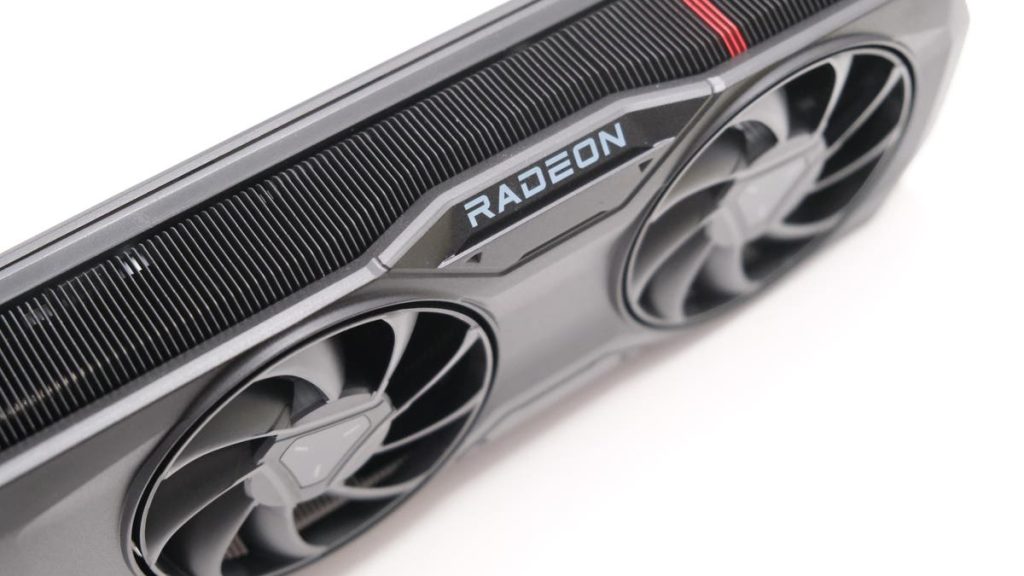Today AMD is allowing the lid to be lifted on Radeon RX 7800 XT reviews and benchmarks and with the graphics card’s seemingly keen price of just $499, it undercuts the Nvidia RTX 4070 by around $100 in most cases. Today, then, we’ll be focussing on working out which of these two cards you should buy for your gaming PC, whether older AMD or Nvidia cards keep up and if you might want to spend more on something more powerful.
The specifications above point at a noticeably less powerful graphics card than the Radeon RX 7900 XT, but you still get 16GB of GDDR6 video memory. That’s the same as the Radeon RX 6800 XT, which also has more compute units, but the same 256-bit memory bus.
However, the total board power isn’t that much less than the Radeon RX 7900 XT at 263W versus 300W so there’s not likely to be much power savings to be had compared to the pricier card.
Test system
I used an Intel Core i9-12900K, 32GB of Kingston Fury 6400MHz DDR5 memory strapped to an NZXT N7 Z790 motherboard along with the latest drivers and Windows 11 updates. As the RX 7800 XT is a reasonably powerful card that’s bought by both low and high resolution gamers, I’ve tested it at 1080p, 1440p and 4K resolutions and also included FSR enabled result on occasions to show its benefits as I do the same with Nvidia’s DLSS.
I’ve used the latest drivers and Windows 11 updates and BAR/Smart Access Memory is enabled. I’ve carried out 1080 testing on a select number of cards, but where possible, included results for high-end models for comparison at higher resolutions.
One issue to note is that Rainbow Six Extraction refused to run on my system with the release driver so sadly had to exclude that game from the testing.
Benchmarks
Below we can see Far Cry 6 with a selection of low, mid-range and previous generation cards cards at 1080p. Here the Radeon RX 7800 XT proved to be faster than the RTX 4070, but it wasn’t significantly faster than the RX 6800 XT. However it did have sizable leads over the RTX 3080 and RX 6750 XT too.
At 1440p it did even better, leapfrogging the RTX 4070 Ti and coming close to matching the RTX 4080, although results here still seem to suffer from bottlenecking elsewhere in the system. At 4K, it was less competitive, slipping behind the RTX 4070 Ti but still offering a lead over the RTX 4070 with only. Here we added on FSR too and this made a huge difference, seeing the card beat the RTX 4090 and RX 7900 XTX stock results.
Below this at 4K with DXR enabled, it matched the RTX 4070 Ti again and offered a commanding lead over the RTX 4070. Overall, the RX 7800 XT is a great card for the cash in Far Cry 6.
Below in Halo Infinite’s campaign mode, the RX 7800 XT was the best of the mid-range bunch on the minimum 99th percentile, but as we’ve seen in the past, Nvidia offers a much higher average frame rate in this game with the RTX 4070 well ahead here. IT was a similar story at 1440p with the RTX 4070 sitting well ahead here, with the RX 6800 XT sitting 20fps or so below.
At 4K The RX 7800 XT was able to reign in the RTX 4070’s minimum 99th percentile frame rate at 81fps, but the Nvidia card had a slightly higher average frame rate while again the RX 7800 XT had a sizable lead over the RX 6800 XT.
In Forza Horizon 5 below, the RX 7800 XT wasn’t much faster than the RX 6800 XT at 1080p but did perform much better than the RTX 4070 and RX 6750 XT as well as the RTX 3080. At 1440p it was much faster than the Nvidia card and also had a higher minimum 99th percentile than the RTX 4080.
Stepping up to 4K, we can see both standard and FSR-enabled results, but FSR here didn’t yeild much more performance, which was a similar issue with the RX 7900 XT. The results here point at bottlenecks and you have to step up to step up to the RX 7900 XT or RTX 4090 to see signficiantly better frame rates.
In Watch Dogs: Legion below, the RX 7800 XT was a little faster than the RX 6800 XT, but failed to overhaul the RTX 4070 at 1080p. The same was true at 1440p but at 4K, the RX 7800 XT was faster than both those cards and matched the RX 6950 XT too, although the likes of the RTX 3080 and RTX 4070 Ti were much faster, plus Nvidia has the advantage of DLSS in this game, the results of which you can see in the final Watch Dogs graph.
In Metro Exodus below we have a great performance for the RX 7800 XT, easily seeing off the RX 6800 XT and RTX 4070 although the former wasn’t far off its minimum 99th percentile. At 1440p and adding more high-end cards into the mix, the RX 7800 XT was again very strong, coming close to matching the RTX 3090 and the far more expensive RTX 4070 Ti not really offering much of a lead.
At 4K the RTX 4070 came back and offered a higher average frame rate but the RX 7800 XT was significantly faster than the RX 6800 XT, easily offering a good upgrade from that card. Again, though, Nvidia has the advantage of DLSS in this game and here even the RTX 4060 8GB was a match for the RX 7800 XT.
The final game is Flight Simulator and at 1080p there wasn’t much difference in the results pointing to bottlenecks elsewhere in the system, but at 1440p the RX 7800 XT seemed to struggle and failed to better the RX 6800 XT. In fact the RX 7900 XT failed to topple the RX 6900 XT here so it seems to be a theme with AMD cards.
MY 4K test is part of a new benchmark in a different area that I’ll be migrating to for future graphics card reviews that offers more variation between cards. Here with standard and FSR enabled results, the RX 7800 XT was able to better the RTX 4070 and with FSR enabled managed a silky smooth 66fps minimum 99th percentile that bettered the stock result of the RTX 4080.
Below we can see power consumption and here the RX 7800 XT is pretty average, drawing more power than the RX 6800 XT and a lot more than the RTX 4070 at a system draw of 415W versus just 322W for the Nvidia card. Power efficiency is definitely a strong point for Nvidia’s RTX 40-series cards but the reference AMD model of the RX 7800 XT I used was quiet during testing and partner card models should be even more so.
Conclusions
AMD’s Radeon RX 7800 XT is going to shake up graphics card pricing not just with Nvidia’s cards, where it was consistently faster than the more expensive RTX 4070, but also within its own ranks, where the usually slower RX 6800 XT remains around $500 – the same as the launch price of the RX 7800 XT.
Finally, we have what could be a disruptor following the mediocre launch of the RX 7600 and AMD relying on previous generation card price cuts to plug the gap between it and the RX 7900 XT. The RX 7800 XT is fast and isn’t just a great choice for 1080p and 1440p gaming, but can handle many titles at smooth frame rates on ultra-wide and 4K monitors too. The fact it has 16GB of RAM should mean it ages will like its previous generation siblings.
As usual, Nvidia has advantages such as DLSS and better power efficiency, but AMD has FSR 3 which is set to make waves in the months ahead and with the RX 7800 XT, far keener pricing too. It might not always offer a decent upgrade over the RX 6800 XT – as is usually the case we can expect AMD to improve driver performance over the coming months here – but if you can pick one up for $500, this is the best mid-range card launch in quite some time.
Read the full article here









